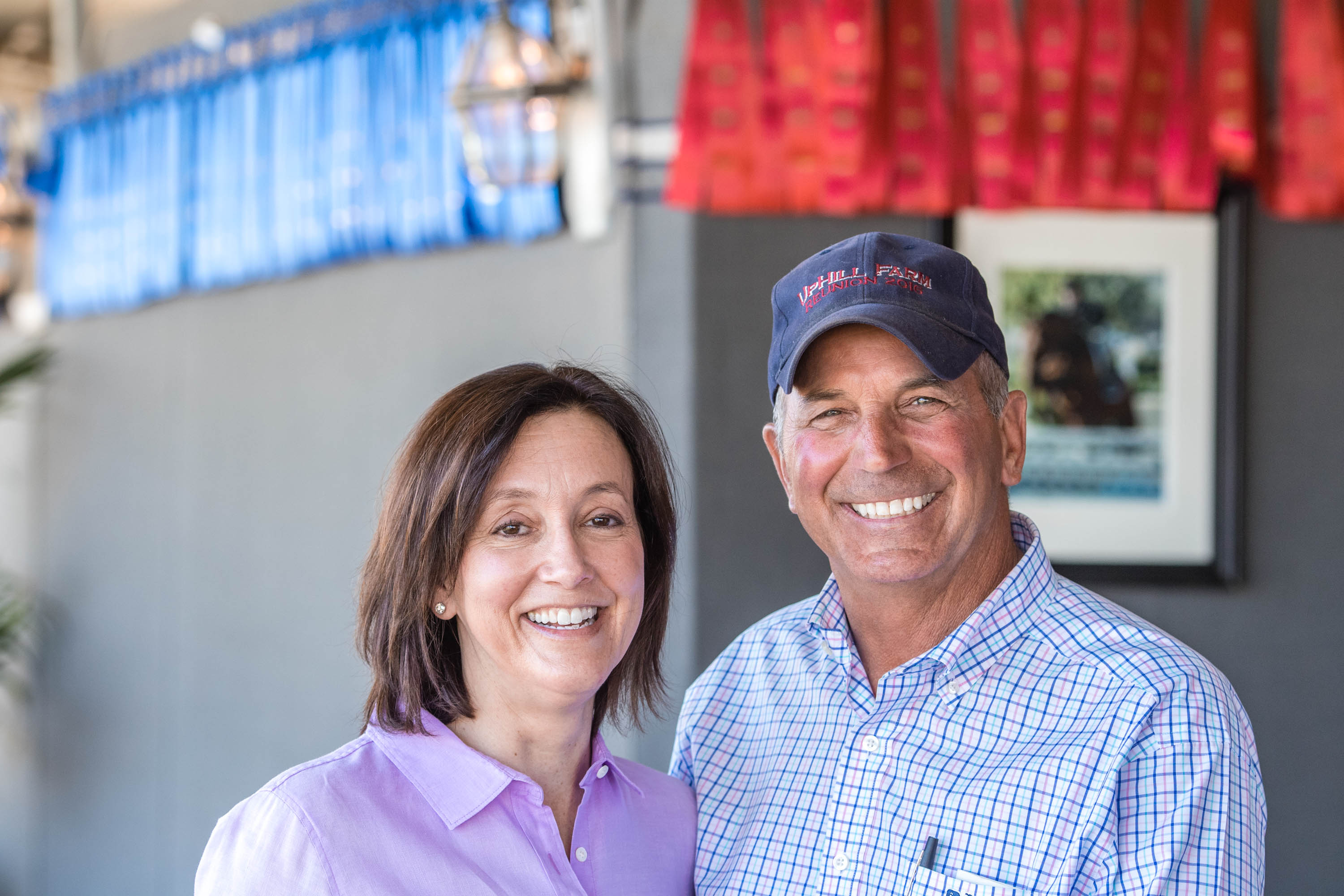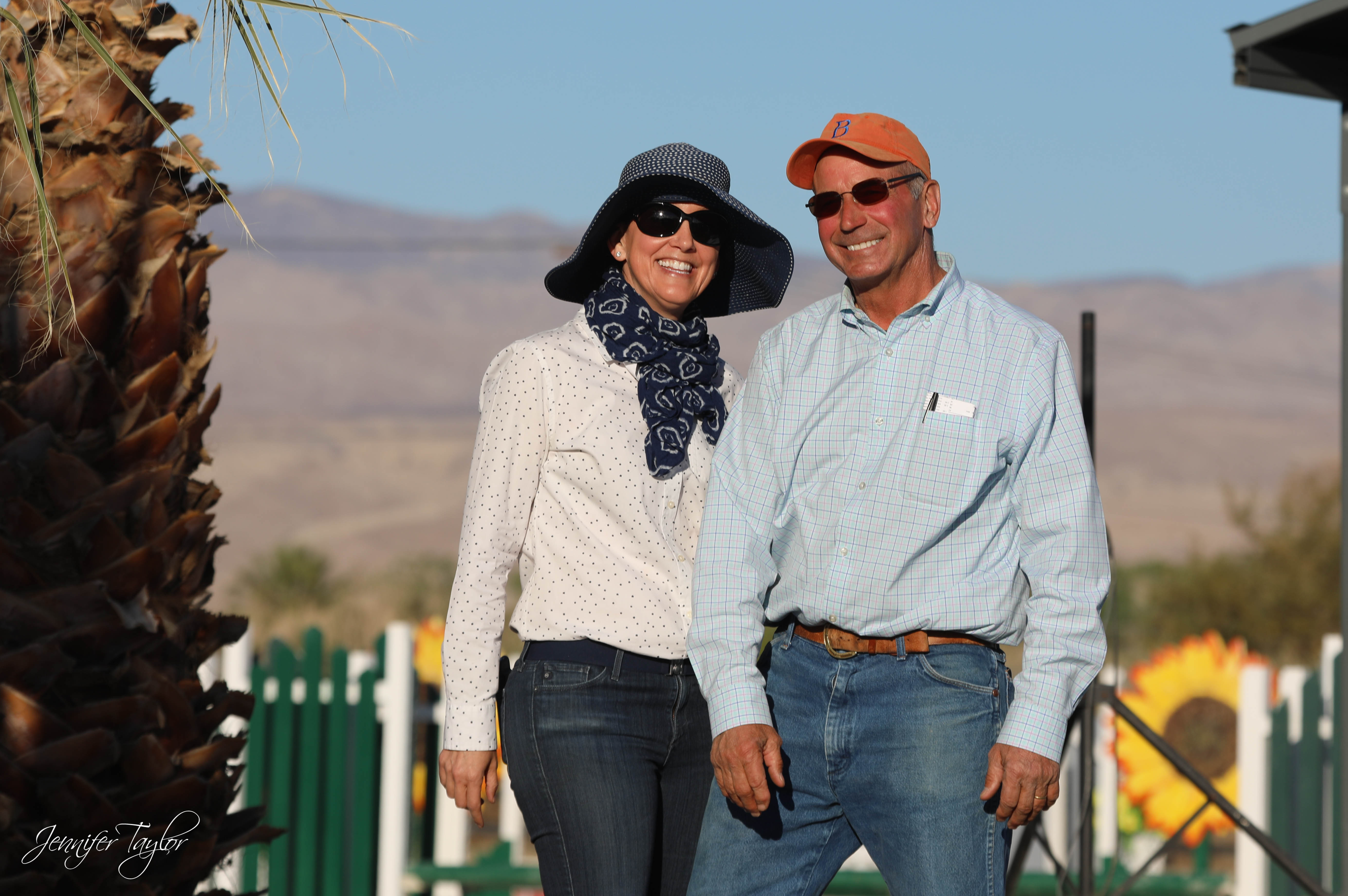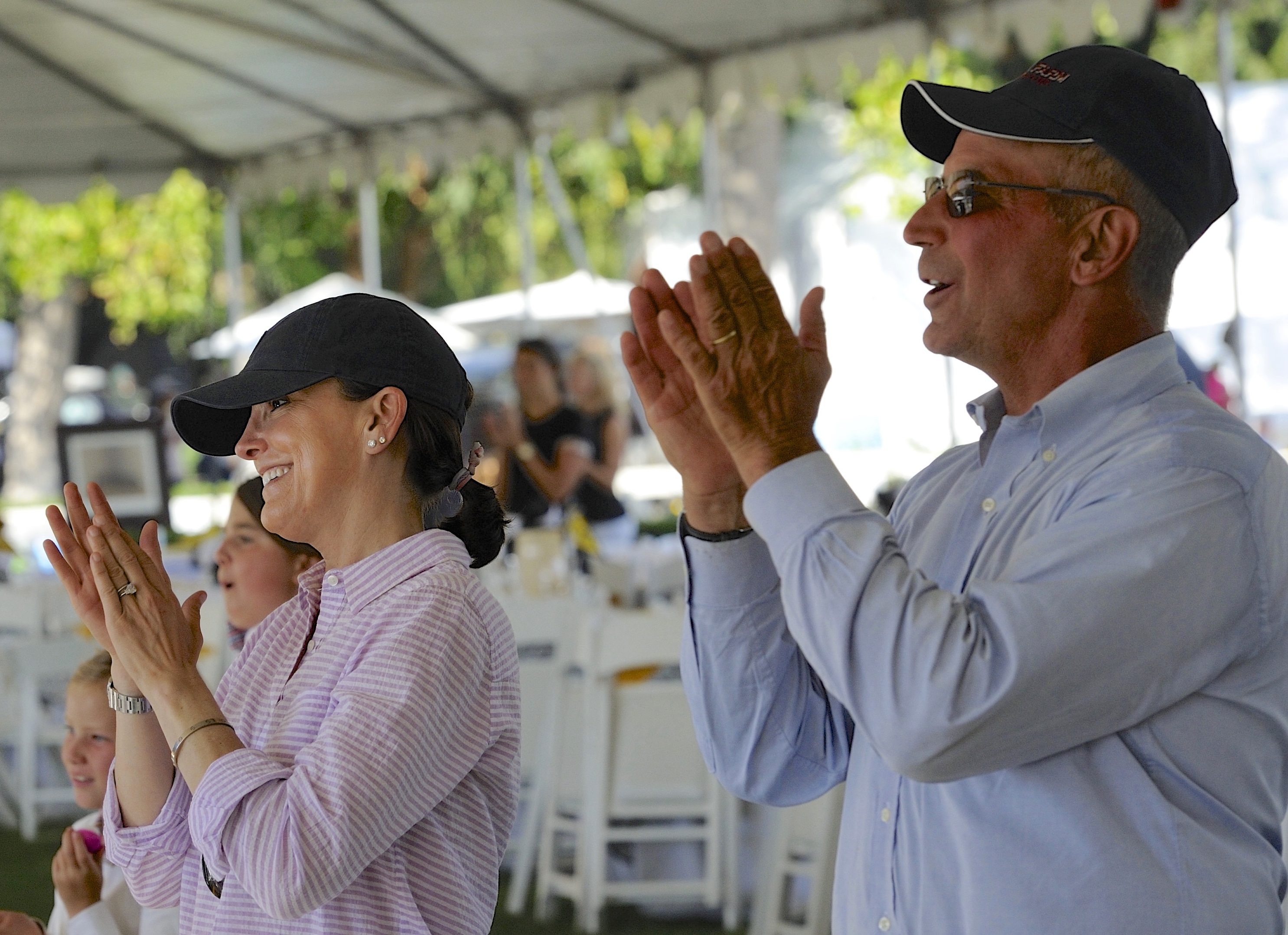Carleton and Traci Brooks have a lifetime of experience with horses, an extensive teaching and training background and are known for their ability to match horses and riders to produce results. They run their successful hunter/jumper/equitation business, Balmoral Farm, which they operate in two California locations—Malibu and west Los Angeles. This unique setup allows them to provide their horses with plenty of healthy open space while also being accessible to their diverse clientele, which ranges from Short-Stirrup to Adults and high performance. They shuttle horses back and forth between barns almost daily to be sure everyone enjoys plenty of turnout and trail riding.

Carleton and Traci have coached riders and trained horses to a long list of wins, including many Indoors championships and Horse of the Year awards. Carleton is also a popular clinician and a U.S. Equestrian Federation “R” judge.
I caught up with Carleton and Traci at the Washington International Horse Show in late October. They both fell in love with horses at a young age and knew from the get-go that they wanted to pursue a career that involved horses. They’re committed to being not just trainers and coaches, but dedicated horse people. While they clearly take their jobs seriously, they certainly know how to have fun and keep things light. They kept me laughing throughout our chat and at one point, Carleton even got up to demonstrate his best attempt at the floss dance. During the conversation we discussed a wide range of topics, including the importance of treating horses as individuals, their recipe for consistent success, and what underlies it all—their love of the horse.
You can listen to the full interview wherever you listen to podcasts, but in the meantime, below is a snippet of our conversation.
What do you think makes a good horseman?
CB: I think a good horseman—in any discipline or breed—becomes the horse. They see it through the horse’s eyes, they sense it. They have a lot of emotion sensitivity. They understand how a horse thinks, breathes and reacts. The horse is a flight animal. Horses are extremely intelligent, but I think you have to start out on a lower level and work back. I think the great horsemen lower themselves to whatever level the horse is at the at time and bring the horse back up to where they need to be, together as a team. And the care of the horse is obviously the utmost importance.

TB: I think treating the horses as individuals and not having a cookie-cutter method for every horse and trying to feel that horse and understand what that horse is trying to tell you. Take a moment to have the compassion and put yourself in that horse’s place and try to see things through that horse’s eyes and how he feels and he responds and what he needs. That’s sometimes hard because everything is so fast paced now that it’s hard to take a step back.
Can you think about a time where you had a really difficult training challenge with a horse and how you overcame it?
CB: The biggest training challenge is to allow the horse to let you learn about them and then take that and be productive into what your goal is. I think horses need to know what they’re supposed to achieve before they can learn how to do it. I think a lot of people start at the beginning and hope to get somewhere. If you can somehow introduce the horse to what he’s supposed to achieve, I think the learning process and the training process works much better.

TB: A lot of it is trial and error too. If something doesn’t work, change it, do something different. Try something different every day. Keep changing it until you find that you’re at least on the right path. You’ll hear Carleton say a lot, “Think out of the box.” Just do things. Don’t try to make him like every other horse, or do whatever everyone else is doing. It’s got to be unique, every situation is unique. What I think Carleton is so good at is he retains a lot from horses that we’ve had or books that he’s read. He has that encyclopedia in his brain and can sort of flip through it.
You’re known for taking beginners all the way up to national championships over and over. How do you do that so consistently?
TB: A lot of it is positivity with the horses and the people. I think being patient is a huge part of it. The parents start getting excited and will say, “My child won last week, but she didn’t win this week. Why isn’t she doing so well?” And I think just instilling in everyone that it’s a process. It’s people and horses and there are so many variables. If you’re more oriented with results than process, you’re going to be disappointed. And that’s why we have to sometimes say to the parents, “Just wait, you’ll see. We’ve seen this movie a lot of times and we know it goes and there are ups and downs, but we’re on the right track.” Everyone’s path is different. Everyone does things in their own time.

What’s something that you work on with students a lot?
TB: We do a lot of positive visualization. You can take a lot of riding lessons in your head. You don’t actually have to be sitting on the horse to feel it. For us, a lot of it is about attitude and positivity in general. We work on letting the kids just gallop to the jump and making them comfortable with galloping to the jump. We try to let everybody develop their unique feel of how to get to the jumps but in a positive way and forward. And we do a lot of forward and straight. Forward and straight are the cornerstones to everything.
CB: Calm, forward, straight and square—gospel words.
Do you have a favorite training exercise you could share?
TB: At home we don’t jump very high. We do a lot of technical exercises with lower jumps, but not so technical that we’re teaching the kids to pull on the reins too much.
CB: But not too low—challenging exercises. You have to think to do the exercise. It’s always a thinking game and you have to look at what you want to achieve and we set up those exercises that way. Their warmup or their flatwork for that day will be geared for that exercise. Just like if you know what your course is before you warm up for your class—I have a huge pet peeve that the trainer will go out in the preparation ring and prepare them for that class and not have a clue what the course, or test is. That’s a huge mistake in our industry today.
See also: Carleton and Traci’s training story, “Sharpen Your Course-Riding Skills”
Listen to Carleton and Traci’s full interview here.
About the Practical Horseman Podcast
The Practical Horseman podcast, which runs every other Friday, features conversations with respected riders, industry leaders and horse-care experts to inform, educate and inspire. It is co-hosted by Practical Horseman editors Sandy Oliynyk and Jocelyn Pierce. Upcoming episodes are with top hunter, equitation and jumper trainer Andre Dignelli, show-jumping Olympian Laura Kraut and World Equestrian Games team gold medalist Adrienne Sternlicht. Find the podcast at iTunes, Stitcher and Soundcloud or wherever you get your podcasts.




